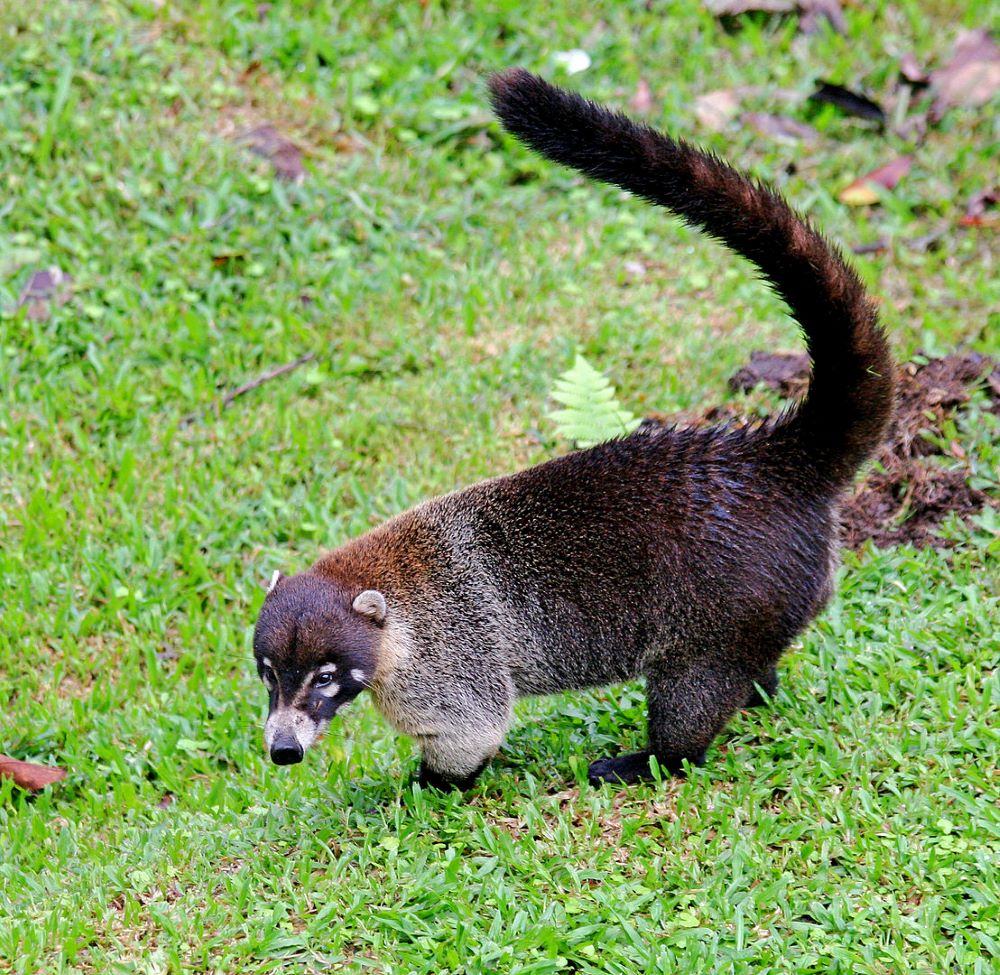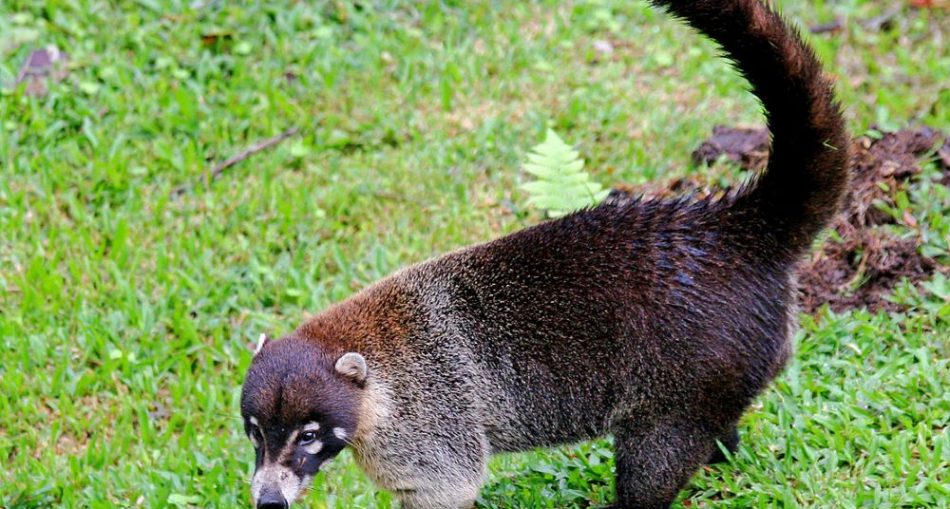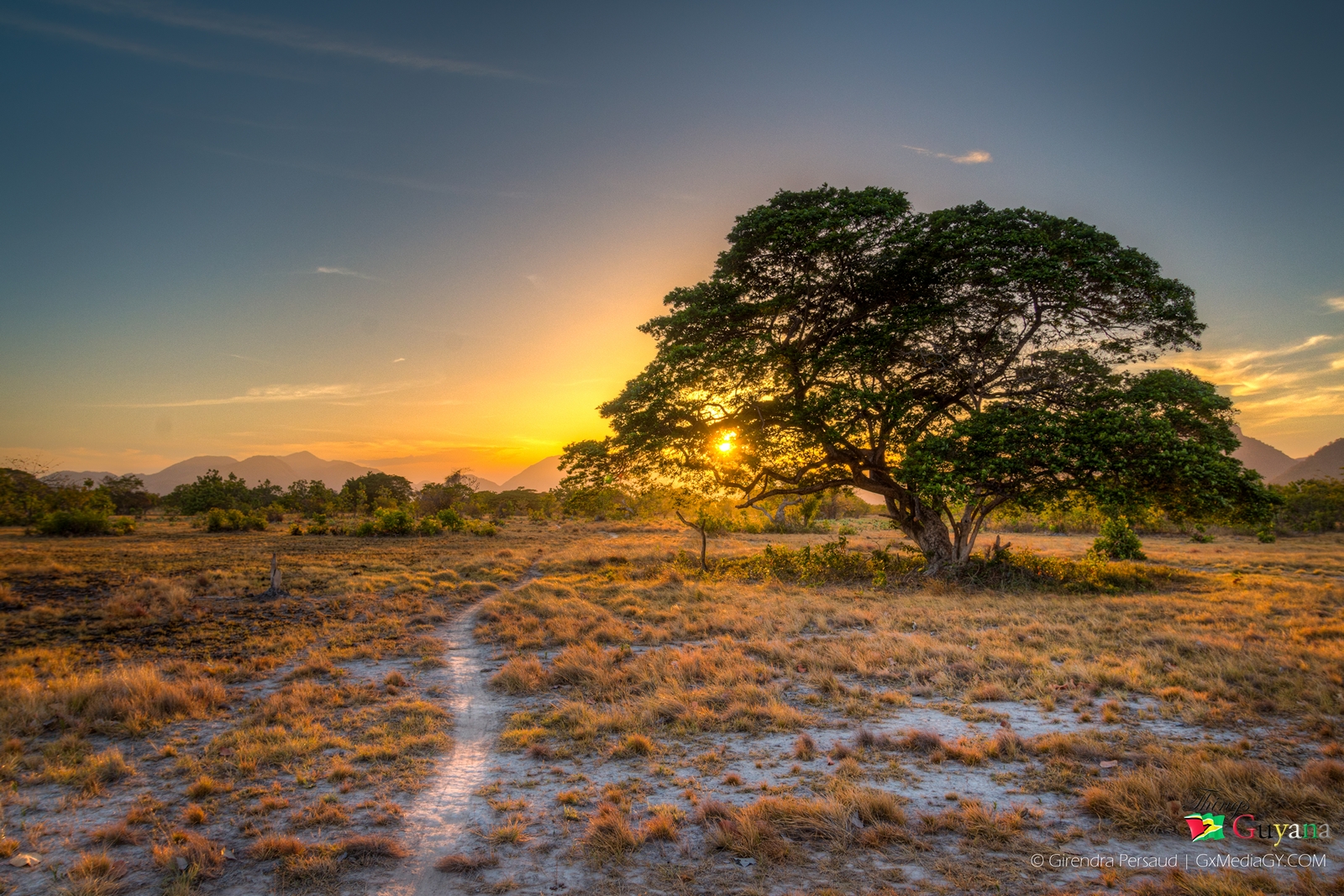The White Nosed Coati (Nasua narica) is a species of coati, which like the South American Coati, is native to Guyana. However, it can be found in almost any part of South America and Central America, in countries like Argentina, Brazil, Chile, Colombia, Ecuador, French Guiana, Suriname, and Venezuela. The White Nosed Coati can also be found in Arizona, New Mexico and Columbia. There is a subspecies of the White Nosed Coati called the Cozumel Island Coati (N. narica nelsoni) which is found on the island of Cozumel. The White Nosed Coati is known by several other names including coatimundi and the pizote, antoon, and tejón. This particular species of coatimundi can be distinguished by its the white patch on its face. They are easily tamed and have shown some intelligence by adapting to humans living closeby. Their tails are an important feature which helps these adept climbers to balance on trees, and swim in the water.

The White Nosed Coati -Photo By Joseph C Boone – Own work, CC BY-SA 3.0, https://commons.wikimedia.org/w/index.php?curid=25318467
Features Of The White Nosed Coati
- Overall Body – The White Nosed Coati has a slender head, like many similar species of coatimundi and has tiny ears. This species of coati has dark, almost black faces, with streaks of white across its eyes, nose and inner ear. Their feet are generally darker in colour than their body and their tails are often erect and held above their body, an odd sight since their tails are half the size of their bodies. Like the South American Coati, their tails are ringed but more noticeable in the young.
- Colour – The fur of the White Nosed Coati is brown, with hints of red and yellow but sometimes silver at the top. On its underside, you will see a light brown colour while the lower legs and feet are blackish-brown.
- Paws – The White Nosed Coati can walk on their bear-like paws and has long, sharp claws.
- Snout – Their snouts are long, pointed and tilts up a little at the tip, which makes it suitable for foraging in cracks and crevices. The white band found across its snout, distinguishes it from any other coati species.
- Limbs – Their limbs are strong, which makes them great climbers and swimmers. Coatis can also stand their hind legs for short lengths of time.
- Weight & Length – An adult typically weighs about 4–6 kg (8.8–13.2 lb) but the females are generally smaller than their male counterparts. The males can weigh up to 12.2 kg (27 lb). The average nose-to-tail length is about 110 cm (3.6 ft), with half of this being the length of the tail.
Interesting Tip
- White-nosed coatis pollinate of the balsa tree by inserting their noses into the flowers in search of nectar. Pollen falls on their snout and dis distributed in the surrounding areas.
Scientific Classification Of The White Nosed Coati
Coati – Nasua narica [Scientific name]
- Kingdom: Animalia
- Phylum: Chordata
- Class: Mammalia
- Order: Carnivora
- Family: Procyonidae
- Genus: Nasua
- Species: N. narica
Habitat Of The White Nosed Coati
The White Nosed Coati can be found living in a great many places. They live in tropical wooded areas, either dry or moist forests, oak and pine forests, rain forests and cloud forests, at altitudes from sea level to 3,000 m (9,800 ft) and even in deserts and savannahs.
Diet Of The White Nosed Coati
White Nosed Coatis are omnivores, which means they eat both plants and animals but they seem to prefer carrion, eggs, fruits, insects, snakes and small vertebrates. Most often, you can find these creatures foraging on the ground but they are adept climbers and use their tails for balance. Like raccoons, human presence does not deter them and so, they raid campsites and trash receptacles.
Reproduction Of The White Nosed Coati
The breeding of coatis depends on the availability of food among other ecological conditions. Females normally live in groups, known as bands with their young, inclusive of males up to two (2) years old, while older males are solitary. Females generally breed at twenty-two (22) months of age but some may not until forty-six (6) months old. Their average gestation is approximately 70-77 days. There is heightened competition among the males who breed around thirty-four (43) months old if they can. However, some can remain unsuccessful until their fifth (5th) year. Multiple males may breed with the females of a band and the consort for a band may change year by year. At the end of the mating season, the males return to living alone. After a while, the pregnant female separates from her band and seeks a tree or den to nest and birth alone. Young White Nosed Coatis are weaned when they are four (4) months old and are full-grown in about fifteen (15) months.
Five Facts About The White Nosed Coati
- Unlike the racoon, White Nosed Coatis are diurnal, active in daylight but can adjust their habits to become almost nocturnal. They typically sleep in trees and descend early in the morning to forage for food.
- Coatis communicate through vocal signals and like to spend time grooming themselves and each other.
- The young cubs are never alone during foraging and are left with a pair of babysitters.
- The cubs Young coati are very playful and spend a lot of time chasing and wrestling with each other.
- Coatis are typically preyed upon by boas, raptors, hunting cats, and Tayras.
The White Nosed Coati in Guyana
While the White Nosed Coati belongs to the same Genus, and share many habits with like the South American Coati, they are different species. You can recognize the White Nosed Coati by the distinctive bands of white on its snout, eyes and inner ears. The White Nosed Coati is smart and does not shy away from human interactions. Their young are always babysat by adults while the rest of the band are foraging for food. It should not be much of a surprise if you find one rummaging in your bins since they are very much like their relative, the racoon. White Nosed Coatis are generally very intelligent and make great pets.
Article References
- https://en.wikipedia.org/wiki/White-nosed_coati
- https://www.kaieteurnewsonline.com/2016/01/10/the-white-nosed-coati-nasua-narica/
- https://nhpbs.org/natureworks/coati.htm#:~:text=The%20white%2Dnosed%20coati%20is,a%20little%20at%20the%20tip.
- https://nationalzoo.si.edu/animals/white-nosed-coati#:~:text=The%20coati’s%20gestation%20period%20is,up%20to%20two%20years%20old.







